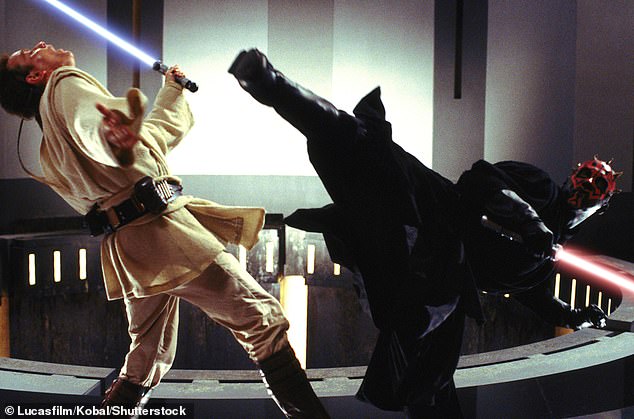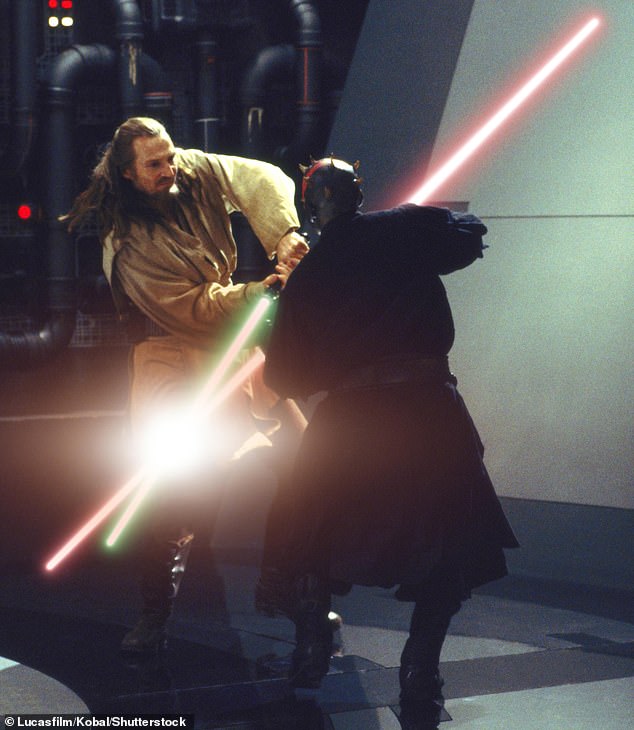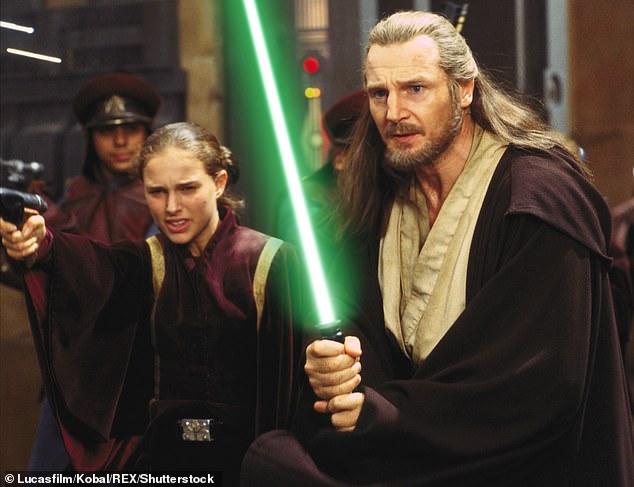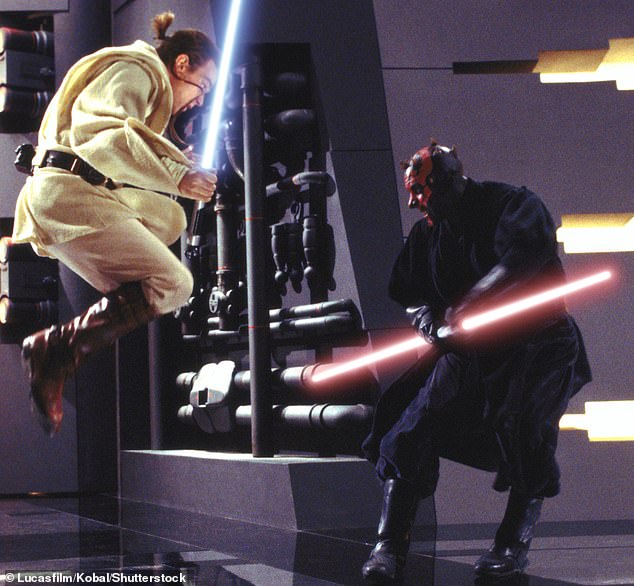A Star Wars film has been reclassified from U to PG owing to a fight scene featuring ‘moderate violence’.
The British Board of Film Classification (BBFC) labelled The Phantom Menace PG for its cinema re-release because of dogfights, laser weapons and a lightsaber battle which includes brief but ‘bloody detail’.
The fight also shows a ‘non-graphic’ shot of a villain’s dismembered body, The Telegraph reported.
The film first hit screens in 1999, and its reclassification was revealed in the BBFC’s annual report for last year.
‘PG’ stands for parental guidance, and means the film should not unsettle a child aged eight or above, although some scenes may unsettle more sensitive children.
And U, or universal, means the film is suitable for all watchers and is not liable to cause upset.

A Star Wars film has been reclassified from U to PG owing to a fight scene featuring ‘moderate violence’

The British Board of Film Classification labelled The Phantom Menace PG for its cinema re-release because of dogfights, laser weapons and a lightsaber battle
Other cult classics also saw classification changes. Fight Club – a 1999 action film starring Brad Pitt and Edward Norton – saw its classification lower from 18 to 15 because of updated guidelines.
Similarly, action film The Crow, from 1994, was also lowered from an 18 to a 15.
But 1937’s iteration of A Star Is Born went up from U to 12. It was deemed unsuitable for children under 12 because of the implication of suicide which was described as ‘visually discreet’.
It follows a spate of reclassifications of some of the most well-known films in recent times.
With its blood, murder and school prom rampage, Carrie was instantly labelled ‘X’ certificate in 1976.
But last year classifiers dropped the age rating for the movie from 18 to 15.
The BBFC said it had relaxed the grading for the Sissy Spacek movie to reflect modern ‘audience expectations’.
As well as the violence, Carrie – directed by Brian De Palma – includes full frontal nudity and a depiction of oral sex.

The film first hit screens in 1999, and its reclassification was revealed in the BBFC’s annual report for last year
It also depicts Carrie killing her mother using telekinesis to propel blades into her body.
The film was originally given an X rating when it was released, which is broadly the equivalent of an 18 today.
It has also been rated 18 for home entertainment since 1987.
The BBFC said that while the prom rampage features many deaths, ‘the violence is neither prolonged nor sadistic and therefore is acceptable at 15 under our current guidelines’.
Also last year, Mary Poppins had its age rating lifted from U to PG because it contains ‘discriminatory language’ – but the word in question is so obscure as to have evaded detection.
The BBFC now considers the 1964 tale of Julie Andrews’s magical nanny to be not suitable for children to watch alone, despite the film enchanting generations of youngsters.
The reclassification is due to the use of the word Hottentots. The dated term was historically used by Europeans to refer to the Khoekhoe, a group of nomadic herders in South Africa, but is now regarded as racially offensive.
Admiral Boom, played by Reginald Owen, who believes he is a naval commander in charge of a ship, uses the word twice in the film. On the first occasion, he is seen dangling from the roof in a boat where he asks one of the Banks children if they are ‘going to fight the Hottentots’.

The fight features brief ‘bloody detail’ and also shows a ‘non-graphic’ shot of a villain’s dismembered body
Later in the film when the chimney sweeps, whose faces are blackened from soot, dance on the roof the admiral exclaims ‘we’re being attacked by Hottentots’. He then aims fireworks at them.
According to the BBFC’s guidelines on PG content, ‘some scenes may be unsuitable for young children’.
They add that while children of any age can watch, parents are advised to consider whether the content may upset ‘younger, or more sensitive, children’.
The BBFC looked at historical context – the film is set in early 20th century London – but the fact the language is not condemned means it now exceeds guidelines for a U film.
The BBFC said: ‘We understand from our racism and discrimination research… that a key concern for… parents is the potential to expose children to discriminatory language or behaviour which they may find distressing or repeat without realising the potential offence.’
It added: ‘Content with immediate and clear condemnation is more likely to receive a lower rating.’












